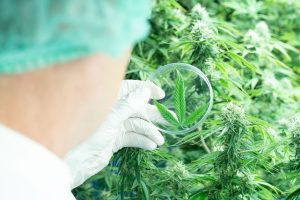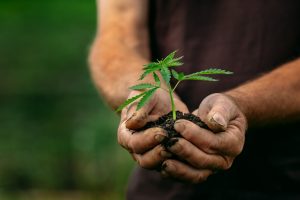Marketing to women in the cannabis industry isn’t a one-trick pony. And in a medical market like Maryland, innovative female-focused products are a gateway to deeper needs. But what exactly are those needs? And what else is missing? Let’s explore the gap in our medical cannabis market with these key points:
- Blissiva: expanding the focus on women in Maryland
- Women’s health and cannabis research
- Addressing gender issues with consumption and usage habits
- Inclusivity, biology and other considerations for women and cannabis
Blissiva: expanding the focus on women in Maryland
Blissiva’s Balance Pen offers a sleek, luxurious vaporizer that offers anxiety relief without the discomfort too much THC can bring.

The creators emphasized discreet, anxiety relief for women – which is based on frequent complaints about anxiety and insomnia issues from their patients at Greenhouse Wellness in Ellicott City.
When viewing Maryland’s qualifying conditions for medical cannabis use circa September 2019, approved conditions include:
- cachexia
- anorexia
- wasting syndrome
- severe or chronic pain
- severe nausea
- seizures
- severe or persistent muscle spasms
- glaucoma
- post-traumatic stress disorder (PTSD)
- another chronic medical condition which is severe and for which other treatments have been ineffective
None of these adequately address female reproductive or gynecological issues that cannabis can help with.
Women’s Health and Cannabis Research: delays in research on specific issues and what it helps with
Women are showing relief with these gynecological conditions when using medical cannabis:
- endometriosis
- premenstrual syndrome (PMS)
- premenstrual dysphoric disorder (PMDD)
- menopause
- pelvic conditions like chronic pelvic pain (CPP)
CB1 and CB2 receptors, which interact with cannabinoids in cannabis products, are found in abundance in the uterus, intestines, pancreas and other places. And yet there’s a serious lack of research about women and cannabis use.


For women with PMDD, relief options are limited and often times not enough, especially with accompanying negative side effects.
So when will Maryland’s medical cannabis program will expand to address these conditions? And when will suppositories and similar products be introduced?
Keep these in mind with making updates to the medical cannabis program here.
Addressing Gender Issues with Consumption and Usage Habits
Suppositories can be inserted into the vagina (or rectum) to target discomfort. And this type of product aligns well with targeting gynecological conditions because they can be readily absorbed by the vagina’s mucus membrane.
Though more accurate, this is a discrete method of consumption similar to Blissiva’s Balance Pen. This opens the door to how cannabis use (based on the legacy market) is tied to gender.
The market moves with this awareness.
According to this study, women are conditioned to maintain “traditional femininities” of closely controlled behavior with use.
Inclusivity, Biology and Other Considerations for Women and Cannabis
Current products on the market serve only one type of woman. With Blissiva and Curio’s OH in mind, that woman is typically:
- White
- heterosexual
- cisgendered (align their identity with the gender assigned at birth)
- the type who punctuates her night with a glass of wine
These products address surface-level issues for this specific type of woman. Blissiva highlights the stress of a board meeting, but not the stress of balancing two jobs with children.
OH highlights it was made with a woman’s body in mind, but what if it works best for person who uses testosterone and need help with vaginal tissue atrophy?
This isn’t to knock these companies or their products: they clearly have a specific audience in mind for their products. But with so much flux and expansion happening in Maryland’s cannabis market, when will helpful products arrive that are truly inclusive?
Takeaways
What is there to take from all this? As great as full legalization would be for Maryland, the current market needs to do a better job at providing medical solutions for patients. Women, people with uteruses and vaginas, and cannabis companies have a gap that’s waiting to be filled. So let’s continue pushing for marketing that keeps inclusivity at the forefront.
ADDITIONAL RESOURCES
- https://www.sciencedaily.com/releases/2019/09/190904113222.htm
- https://www.ncbi.nlm.nih.gov/pmc/articles/PMC5576608/
- https://www.thecannifornian.com/cannabis-business/cannabis-sellers-change-marketing-tactics-reach-female-consumers/
- https://www.crowdspring.com/blog/cannabis-branding-women/
- https://www.healtheuropa.eu/cannabis-womens-health-pelvic-conditions/92279/
- https://merryjane.com/health/does-transitioning-change-the-way-you-smoke-weed






